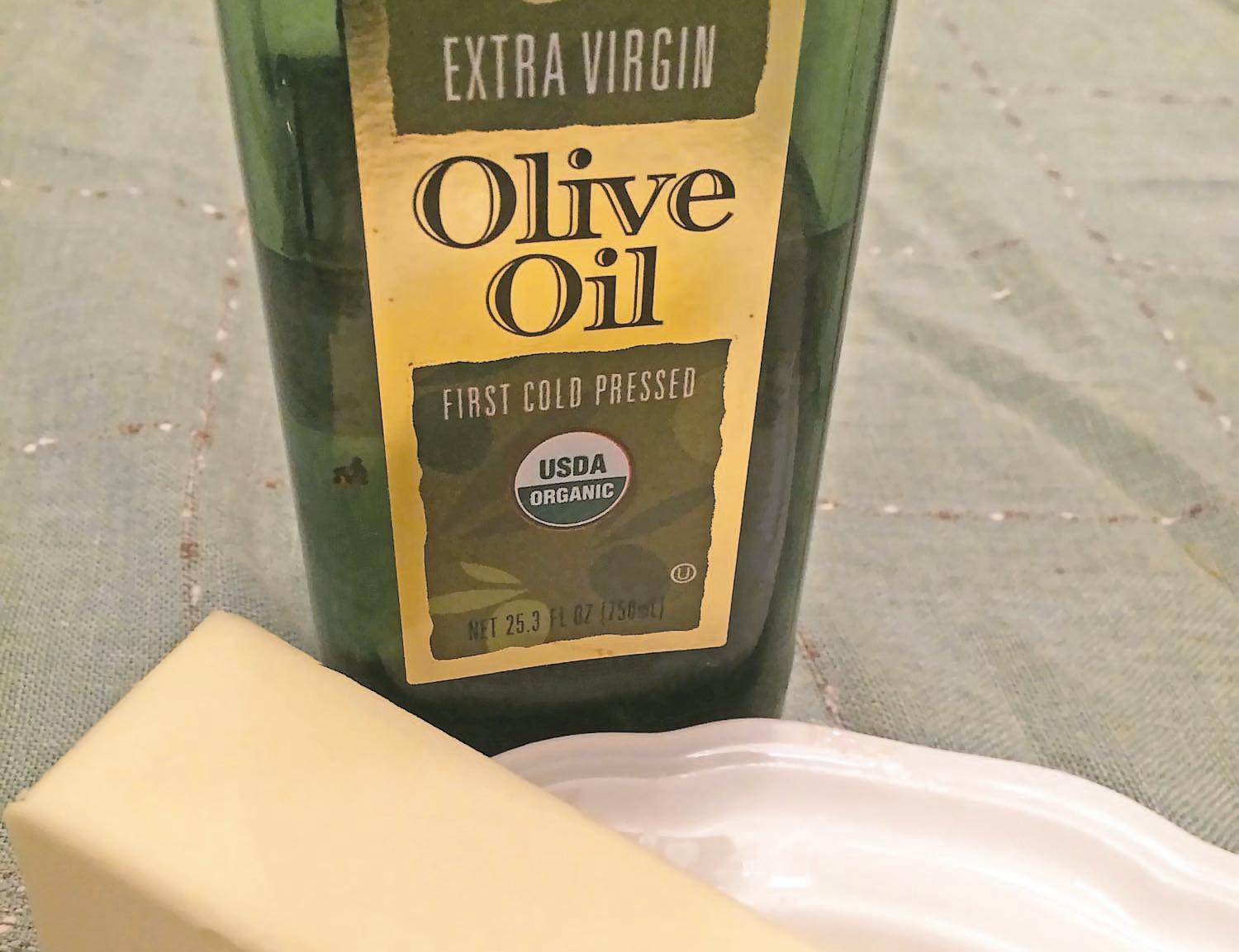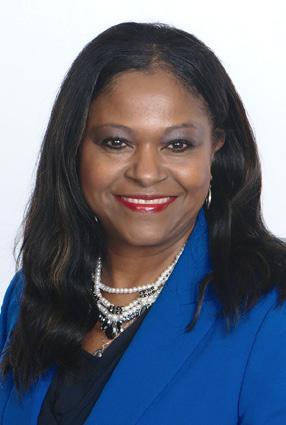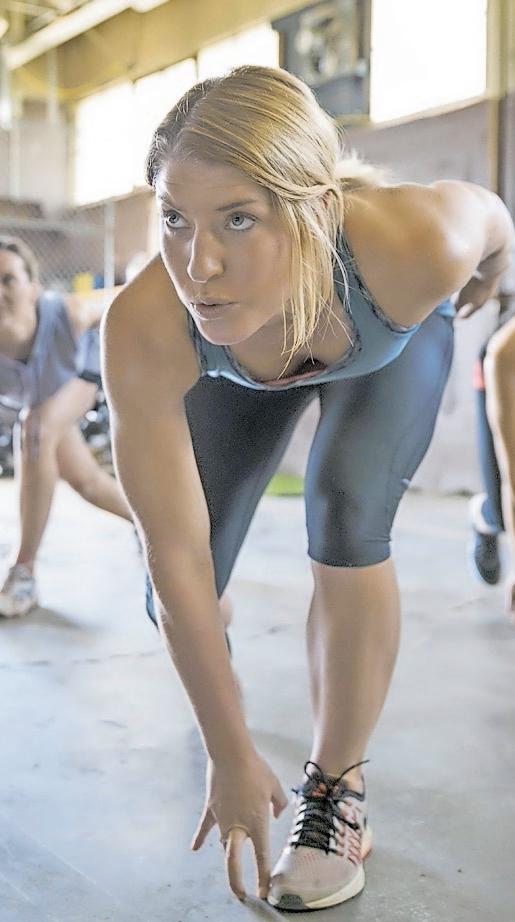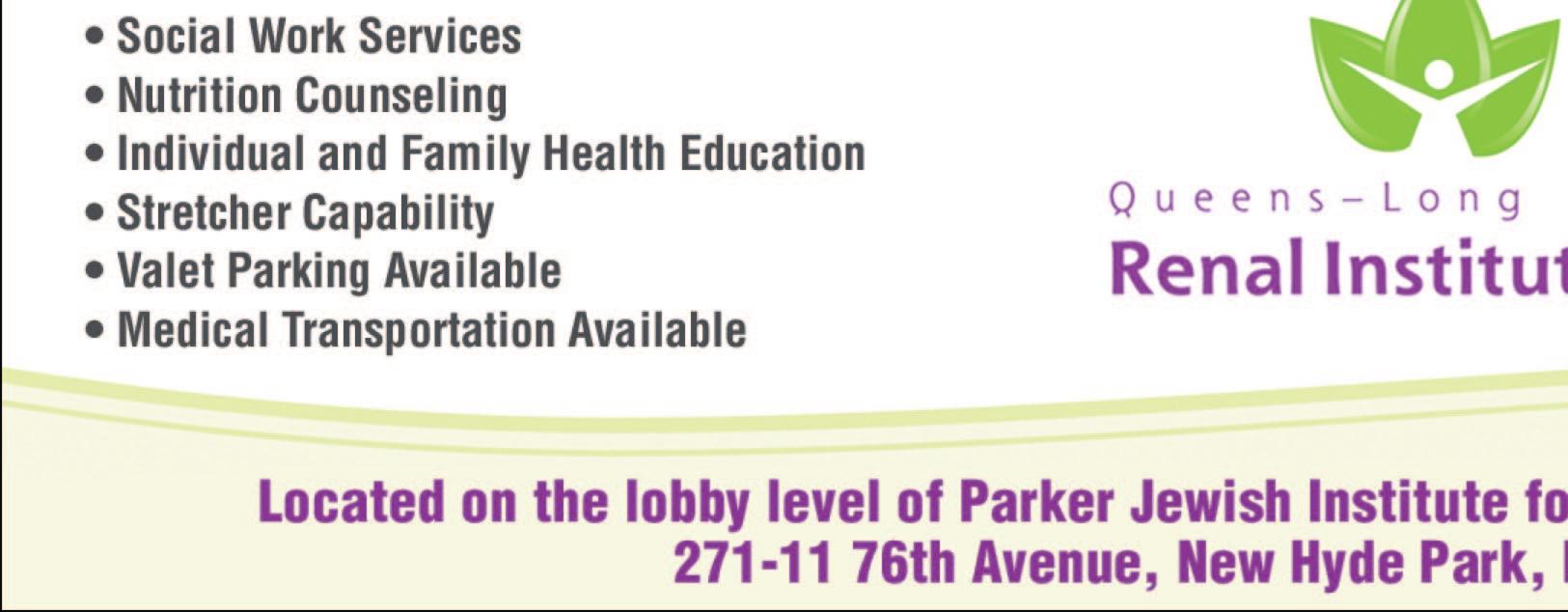yourHEALTH









With a focus on












If your picture-perfect holiday meal is a hearty, creamy stroganoff and a side of mush room soup-fortified green bean casserole, and a “healthful” plate looks like a few pieces of curly kale sprinkled lightly with lemon juice and olive oil, think again. Here’s how to make your fall and winter holidays hearty and healthful.


Consider your options before you go gro cery shopping to keep the flavor and cut the fat. Let’s start with that stroganoff. The typical main ingredients are beef, onions, mushrooms, noo dles, sour cream, Dijon mustard and butter. Replace beef with cubed chicken, half the sour cream with plain low-fat yogurt, and the butter with olive oil.
Dairy substitutions will work in other creamy dishes, and you may find it’s possible to replace all the sour cream with a whole or two percent yogurt and not miss it if you add just a little extra salt, Beau Monde seasoning or few aromatic herbs.
Transform fat-filled, sodium-laden green bean casserole by sauteeing fresh or frozen petite whole green beans with diced bell pep pers and onions. If that’s too far away from the real deal, toast a few canned French fried onions for a garnish. For the time-honored cornbread casserole, make the same substitution for sour cream, omit the cheese, and add an extra egg or two to stretch the dish with extra protein.
Everyone says it because it’s true: you eat with your eyes first. For your party, use nice dish es, arrange your table attractively and create a visual feast with color, shape and tantalizing aro mas, no matter the dishes! A beautiful presenta tion with enough time to enjoy it will make even carrot sticks and low-fat herb dip enjoyable.
“Bypass the chips and other fried poundpackers and help yourself to a small handful of nuts, reduced-fat cheese and fresh fruit, or chilled shrimp,” WebMD paraphrases Dr. Arthur Agatston as saying.“Or serve a hummus dip with a holiday-themed veggie platter: red or green pepper, zucchini and jicama strips.”


Pay special attention to your food garnishes,








colorful nonalcoholic beverages, and table accessories such as candles, napkins and flowers. These will all create the festive feeling of a joyful, satisfying meal together.

It’s normal to feel protective of our favorite holiday flavors and fragrances. So aim for bal ance. Keep the most special foods that would be missed if omitted, such as a favorite fudge recipe, eggnog or pecan pie; cut down on the portion size of those things, and reduce the fats, salt and sugar elsewhere.

Serve fish. Countless elegant, delicious dish es are built around fish and shellfish. It’s quick and easy to saute shrimp with snow peas and thinly sliced green onions in a thin coating of grapeseed oil and add a light wine or lemon sauce before serving. Or serve a succulent 6-ounce piece of marinated salmon for a main course that is beautiful and flavorful. Start with a separate salad course to stretch out the meal and allow time for guests to start feeling full, serve the main course with ample vegetables and half a sweet potato drizzled with a little maple syrup or date sugar to round out the meal.

Create a gathering with an international theme, and make it a potluck. Anyone in your group traveling abroad next year? Are you inter ested in a foreign country just because it sounds interesting? Design a representative menu of that cuisine at your holiday event. To make it even more economical and fun, buy one set of the needed specialty ingredients to shared among your guests, then invite each household to choose one of the courses to prepare for the party. The recipe selection will be your job, so find healthful options and no one will notice much, if any, difference. Add regional music and serve! If your international holiday party is a great success, you may have found a new tradition.
Many websites focus on nutritious and fes tive dining, complete with recipes. In addition, bookstore shelves feature seasonal magazines with such beautiful pictures that readers want to ditch their old ways for the whole year, not just the holidays, and hop on the whole/fresh-foods bandwagon.
Above photo: Your holiday meals can be both hearty and healthy!
For many, the holidays and depression go hand-in-hand. Even in years without a global pandemic, catastroph ic weather events and other recent phenomena, many people find the holidays stressful, exhausting, or depress ing. According to the American Psychological Association, 44 percent ofof women and 33 percent of men surveyed feel stressed during the holidays. The holiday blues strike people experiencing the forced joyfulness and expecta tions of the season. This year, the holiday blues, combined with the residual impact of Covid-19, could spell even more trouble.
While many of us are back to fully celebrating the holidays and ready for a joyous time, it’s not uncommon to also experience stress, depression and anxiety. The demands of the season shopping and running errands while battling crowds, back-to-back holiday parties and social obligations, houseguests and relatives are all potential stressors. Alongside this, feelings of loneliness and isolation are also common around the holidays. And that lurking seasonal affective disorder increases the like lihood of negative thoughts and, perhaps most signifi cant, your emotional health concerns don’t disappear just because it’s the holidays.
While you may often feel pressure to keep spirits up and a smile on your face during the holidays pressure that can worsen feelings of loneliness and depression it’s okay to experience a range of emotions during the season. And, with some helpful tips, you can be more prepared to tackle what’s in store.


Not feeling particularly cheery? You’re not alone. Many find that the holidays bring as much stress as they do joy. But there are ways to ease through the season. To help make the most of your holiday season, clinical psy chologist Neda Gould, Ph.D., shares some mindful advice. What is mindfulness? “Mindfulness is bringing your attention to the present moment with an element of nonjudgment and acceptance. It is noticing when we get caught up in thoughts about the past or the future, and returning our attention to the present the only reality,” explains Gould.
While mindfulness can be a formal meditation prac tice, there are also informal ways to practice this skill. This can give us perspective and decrease stress.
Can good be good enough? “As we gear up for the holidays, we often set the bar impossibly high for our selves and then feel upset when our celebrations don’t live up to expectations,” says Gould.
Before you start preparing, acknowledge that things may not go exactly as planned. “It’s OK if it’s not perfect. Imperfection is healthy and normal. For some of us, it might just take a little practice,” reminds Gould.
With long lines and nasty traffic, the holidays can get hectic. When overwhelmed by the hustle and bustle, ask yourself:
Where does this fit in the grand scheme of things? If you’re frustrated by the long grocery line you’re standing in, remember that it is just a long grocery line nothing more. Don’t let it spoil your afternoon.
Can I use this moment of frustration as an opportu nity to reflect? While the cashier rings up the customers ahead of you, take inventory of the good things that have happened today or the things you are grateful for.
Even if this moment seems stressful, can I find a way to make it pleasant? Connect with someone else in line with a compliment or kind gesture, or notice what’s around you with fresh eyes and an open mind.
You can’t change how others act during the stresses of the holiday season, but you can change how you respond to situations.
“Whenever I encounter a difficult person, I tell myself, ‘this person is suffering, and that’s why they’re acting this way.’ It softens my frustration, helps me be more compas sionate and reminds me that it’s not personal,” says Gould. Keep in mind that the holidays are especially difficult for those who are alone. See if you can extend an act of kindness to those you know are without family and friends during this time of year. If things do get tense with some one, take a few deep breaths. “Those few breaths can shift things and give you new perspective,” says Gould.
“Typical New Year’s resolutions set you up for failure,” warns Gould. If you want to better yourself in the New Year, follow these tips for success.
Start small. Break your goal into tinier steps over the course of the year. If weight loss is your goal, it doesn’t have to be drastic. Try to eat more veggies during your first month and gradually cut back on sweets throughout the next, suggests Gould.
Be kind to yourself. If you didn’t achieve last year’s resolution or stray from the path this time around, let it go. “We often contrive these stories (‘I’m never going to quit smoking!’) that only add to our distress,” says Gould. “With practice, we can notice this self-critic, let go of that negativ ity and pick our goals back up without the guilt or shame.”
Above photo: While many look forward to the joy and merriment of the holiday season, for some, it can be overshadowed by a neverending “to do” list, family drama, or loneliness. Add pandemic-relat ed stress to that mix and the result can negatively affect your emo tional and physical well-being
The holidays are coming and the gift no one wants are those extra pounds associated with holiday eating.
On average, Americans gain 1 to 2 pounds over the holidays. Fortunately, there are several ways to avoid the dreaded holiday weight gain while also enjoying the holidays. It can be easy to overindulge in treats during the holi days, but it is still possible to maintain a healthy approach to the season.
Whether it’s sitting around the family dinner table or munching on end less snacks at a party, the holidays mean food. Lots of food. It can be hard to keep from overdoing it, but it is possible. If you’re hosting a meal or party, or attending one, try these tips to keep the holidays healthy.
Shop with purpose and shop smart. Grocery stores can be traps, both intentionally and unintentionally. Try shopping during off hours. Instead of rushing around and grabbing the first things you see to get out of the crowd, you can take your time to read labels and choose healthier foods. Also, try to pick items from the outside perimeter of the store. This is where the whole, more nutritious foods are located.
Focus on produce. Whether you’re making appetizers or a full meal, amp up the fruits and veggies. Cook them in ways that celebrate their natural fla vors instead of hiding them under heavy sauces or glazes. Healthy swap: Instead of the cream of mushroom soup and fried onions in a green bean cas serole, toss fresh beans with olive oil, garlic, and sea salt, and roast them in the oven for a crisp, light, and healthy side dish.
Lighten up your recipes. Reduce fat and calories without missing out on taste by making substitutions:
√ Replace 1 egg with 2 egg whites to cut cholesterol.
√ Try lower fat versions of creamy ingredients such as yogurt, sour cream or whipped topping or certain reduced-fat cheeses in casseroles and salads. Substitute evaporated skim milk or plain low-fat yogurt for cream and sour cream.
√ Consider serving baked potatoes, yams and steamed vegetables plain rather than as part of a rich casserole or covered with cream sauce. Experiment with spices to flavor vegetables.
You’ve heard this before, but it’s worth repeating: Don’t skip meals. Skipping a meal with the goal of saving calories prior to a holiday event can often backfire and lead to overeating due to ravenous feelings of hunger. Having a filling snack, such as fruit, string cheese, yogurt or a small handful of nuts, can help to curb your appetite and prevent overeating.
Contribute a healthy dish. Ensure at least one nutritious choice is avail able at potlucks by contributing a healthy dish.
Choose your splurges. Scan the buffet or dinner table and choose a couple holiday favorites to splurge on instead of foods that you can have any other day of the year.
Think color. Make a plate look festive by including fruits and veggies. Aim to cover half the plate.
Choose drinks wisely. Stick to calorie-free drinks, such as water, tea or seltzer, instead of high-calorie festive drinks. Alcoholic beverages contribute empty calories and can cause you to make poor judgments with food. If you do choose to drink alcohol, do so in moderation, and alternate each alcoholic drink with a glass of water.
Visit the people, not the food. Move socializing away from the buffet or appetizer table to prevent mindless eating. And say no to food pushers (politely).
Savor seasonal treats. Having treats once a year will not make or break your weight. Make sure you take time to really taste and enjoy that special treat when you have it.
Above photo: Healthy holiday eating can be a battle on two fronts, with indulgent food options at home and at parties. From sugar cookies and eggnog to buffets and multicourse meals, the time between Halloween and New Year’s Eve is often a minefield for eating well.
Parker Jewish Institute is proud to announce that Chief Medical Officer Igor Israel, MD, was honored recently by United Hospital Fund as a Quality Improvement Champion. Dr. Israel was recognized for his efforts to improve quality of care, patient safety, and the patient experience at Parker.

The fourth annual Tribute to Excellence in Health Care event was held in person at Cipriani 42nd Street in New York City, after two years of virtual events due to the Covid-19 pandemic. Dave A. Chokshi, MD, former Commissioner at the New York City Department of Health and Mental Hygiene, gave the keynote address.
Dr. Israel and his fellow honorees — physicians, nurses, physician assistants, pharmacists and a broad range of other health care workers — were each selected by a senior executive at their institution. They represent New York City, as well as Long Island, Westchester, the Hudson Valley, New Jersey, Connecticut, and Rhode Island, and were drawn from hospital systems, long-term care facilities, home care organizations, independent practice associations, federally qualified health centers, medical groups, and behavioral health organizations.
“Today’s celebration of health care excellence is part of UHF’s broader work to build an effective and equitable health care system,” said UHF president Anthony Shih, MD, in his
opening remarks. “We have some of the best health care institutions in the world, many represented in this room, but we all recognize that we must relentlessly continue to improve
Parker Jewish Institute • (718) 289-2212 • lscacco@parkerinstitute.org
quality.” The tribute was created to recognize and nourish this essential work, he said.
“Parker Jewish Institute is so proud of Dr. Israel, whose guidance, expertise and empathy complement our mission at Parker, where are team members are inspired every day to provide top-quality health care with dignity and compassion to our residents and patients,” said Michael N. Rosenblut, Parker’s President and CEO.
“I am honored to be recognized by the United Hospital Fund as a Quality Improvement Champion along with my esteemed peers in health care,” Dr. Israel said. “Together, we are making a difference in the region.”
Cary A. Kravet, a UHF board member and trustee of Northwell Health, was the event chair, and TD Bank was the Lead Sponsor of the Tribute.

The award-winning Queens Long Island Renal Institute focuses on care, safety and convenience for kidney dialysis patients in the New York metropolitan area. Located in the lobby level of Parker Jewish Institute for Health Care and Rehabilitation with its own entrance, the center provides care to Parker’s residents and patients as well as to the general public.
Queens Long Island Renal Institute offers the finest quality of care, state-of-the-art technology and uncompromised dignity, in a bright, ultramodern and comfortable setting.
The center is a certified 5-Diamond Status Facility, and is recognized for its demonstrated commitment to quality improvement by building and promoting a culture of patient safety. To earn this status, dialysis facilities must apply for the recognition each year. They must complete the program’s Culture of Safety module each year. A facility’s entire staff - including dieticians, management, nurses, medical directors, social workers and technicians - must participate in the program in order to qualify.
Licensed by the New York State Department of Health, QLIRI is led by a dedicated, interdisciplinary team of experienced nephrologists and dialysis registered nurses, a

renal social worker, and a registered renal dietitian. The team is ready to meet the individual needs of dialysis patients and families, and provides individual and family health education, as well as nutritional counseling and social work services.
QLIRI is outfitted with an in-center chronic hemodialysis. It features comfortable, state-of-theart, private treatment stations with personal TVs. There is also a homelike reception area with a large-screen TV as well as free wireless access. It
accommodates stretchers, and offers valet parking.
“With Queens Long Island Renal Institute conveniently located in Parker’s first-floor lobby, we continue to safely and comfortably meet the needs of our patients and residents, as well as members of the New York community who also benefit from our services,” said Michael N. Rosenblut, President and Chief Executive Officer of Parker Jewish Institute for Health Care and Rehabilitation.

About Parker Jewish Institute for Health Care and Rehabilitation
Parker Jewish Institute for Health Care and Rehabilitation, which is headquartered in New Hyde Park, is a leading provider of Short Term Rehabilitation and Long Term Care. At the forefront of innovation in patient-centered health care and technology, the Institute is a leader in teaching and geriatric research. Parker Jewish Institute features its own medical department, and is nationally renowned as a skilled nursing facility, as well as a provider of community-based health care, encompassing Social Adult Day Care, Home Health Care, Medical House Calls, Palliative Care and Hospice.

Winter blues, another name for seasonal affective disorder (SAD), is a form of depression that has a seasonal pattern which can start in fall and last until spring. As the days get shorter and colder, the lack of sunlight can leave you feeling sad, low energy or you may experience changes in sleep and eating habits (usually wanting to sleep and eat more) and the desire to isolate.
Environmental: Get outside! Even if it’s only for a few minutes, the fresh air and sun shine can help you feel refreshed. Light bulbs that emit a certain wavelength that mimic the vitamin D in sunlight can also be helpful to use periodically.
Vocational: Focus on the positive and try to manage your stress. Do something that relaxes you, like reading a book or taking a bath.
The ‘Winter Blues’ SAD is more than just “winter blues.” The symptoms can be distressing, overwhelming and can interfere with daily function. SAD has been linked to a biochemical imbalance in the brain caused by shorter daylight hours and less sunlight in winter.
In addition to heading into the cold winter months, we’re also currently coping with the lingering effects of the Covid-19 pandem ic. Many continue be affected by loss and sepa ration, and even the impact of pandemic-relat ed financial hardship. These factors and others can lead to the same symptoms we may see in seasonal affective disorders.
Symptoms can include:
√ Feeling of sadness or depressed mood.
√ Marked loss of interest or pleasure in activities once enjoyed.
√ Changes in appetite usually eating more, craving carbohydrates.
√ Change in sleep usually sleeping too much.
√ Loss of energy or increased fatigue despite increased sleep hours.
√ Increase in restless activity (such as handwringing or pacing), or slowed movements
and speech.
√ Feeling worthless or guilty.
√ Trouble concentrating or making decisions.
√ Thoughts of death or suicide; attempts at suicide.
SAD can be effectively treated in a number of ways, including light therapy, antidepressant medication, talk therapy or some combination of these.While symptoms will generally improve on their own with the change of season, symp toms can improve more quickly with treatment.
Fortunately, there are several steps you can take to help prevent this disorder, beginning with certain lifestyle changes. There are seven different aspects of well-being, and you can focus on making changes in each during the seven months of fall and winter:
Physical: Maintaining your level of exercise
and a healthy balanced diet are great ways to elevate your mood and energy levels through out the winter months. It is also important to regulate your sleep patterns; avoid sleeping during the day and avoid overindulging in caf feine and alcohol. Smile! Your smile can lift your mood as well as the mood of others.
Emotional: Keep a gratitude journal. It’s easy to get sucked into all the parts of the day that aren’t perfect. Instead, make a point to write down what you’re grateful for each day
Intellectual: We can all think of reasons why we shouldn’t get something done, but creating and sticking to a schedule can help you avoid isolation and dwelling on things that make you feel down.
Spiritual: Be mindful of this moment. Instead of focusing on the negative aspects of winter, embrace the season and find things you like about it.
Sure, the winter has its downsides, but like everything in life—it’s only temporary. You might as well enjoy it, right?
Rather than daydreaming about those sun nier, happier times, simply embracing some of winter’s upsides can be helpful. They even coined a term for the idea in Denmark (where they’re experts at dealing with the cold): it’s called “hygge.”
According to Lifehacker, hygge involves going all out to cozy up indoors with friends and family during the harsh winter months. It can include activities like bundling up in sweat ers and under blankets, enjoying seasonal foods and beverages and even hanging out by the fireplace (if you’re lucky enough to have one).
If you have been experiencing signs of sea sonal affective disorder for more than two weeks and lifestyle changes aren’t helping to alleviate the symptoms, it may be time to talk to your doctor or contact a behavioral health spe cialist.

Photo: With lower temperatures, less daylight and even holiday-related stress, it can be easy to fall vic tim to those winter blues.
It’s unfortunate, but recessions are part of the economic landscape. So, it’s handy to have a recession survival checklist:
First, assess your income stability. If you think your income could be threatened or disrupted, you might want to consider adding some freelance or part-time work.
Next, review your spending. Look for ways to trim your spending, such as canceling subscription services you don’t use, eating out less often, and so on.

Marie L Taylor, AAMS™, CRPC™
Financial Advisor
Also, reduce your debts as much as possible. And try to build an emergency fund containing three to six months’ worth of living expenses.
365 Hempstead Avenue West Hempstead, NY 11552-2042 516-538-4338
Another step: Make sure your health and life insurance plans are intact. If you lose coverage due to a job loss, you’ll need to find alternatives.
And if you can afford it, try to continue investing. Coming out of a recession, stock prices tend to bottom out and then rebound, so if you had headed to the investment “sidelines,” you would have missed the opportunity to benefit from a market rally.
$5000 1-year
A recession isn’t pleasant. But by taking the right steps, you can get through it and still keep moving toward your financial goals.
to interest rate risk such that when interest rates rise, the prices of CDs can decrease. If CDs are sold prior to
It’s the holiday season, which means spend ing time with loved ones, fun parties and even traveling. It can be a difficult time to stay on track with our exercise schedule. Furthermore, it can be tempting to let all our exercise routines go out the window.
Despite holidays being a busier time, we can find ways to change up our exercise sched ule to keep us moving throughout the season. Some form of working out is always better than none, and any opportunities for physical activi ty is valuable.
There are 35 days between Thanksgiving and New Year’s Day. It’s a busy time of year, but you don’t have to let your health fall by the wayside. Yes, it might mean 35 days of holiday meals, office parties and possibly travel, but staying fit can also be a factor!
This holiday season, set a goal for yourself. In 35 days, you can perfect your push-up, build up your endurance to a one-minute plank, run up three flights of stairs without stopping or whatever other fitness goal strikes your fancy.
Change up your exercise schedule to stay active and fit while you enjoy the holidays, even if you’re traveling. Even if you don’t exercise as much as you do during the rest of the year, get ting some physical activity in will provide you heaps of benefits, including giving you energy, reduce stress and tension, as well as allowing you to indulge in more calories/
Our schedules fill up fast over the holiday season. And therefore it’s often hard staying

consistent with training and exercising. It seems to be one of the first things we’re willing to drop so we have time for other activities. However, it’s more than possible to get everything done, have fun, <ital>and<ital> get some exercise in. All you need is a little extra planning. This will likely keep you more committed and will make it a lot more difficult to make excuses when the time comes.
If you’re traveling, planning ahead can make all the difference. Take some time to fig ure out what your options are so you’re ready for anything. For example, finding out available gym access nearby where you’re staying, or plan simple workouts that don’t require much space or equipment. If you’re not a fan of going to the gym, hiking or even walking are great exercise options too.
If you’re not sure about your schedule or whether you’ll even have time to get in a work out, then get prepared for when the opportu nity comes.That may mean exercising in the basement of your cousin or friend’s house with no equipment and only 10 or 15 minutes to yourself. Consider these quick tips for squeez ing in a workout even if you have limited time to spare.
Bring resistance bands: Resistance bands are great and convenient to bring along when traveling, as you can use them for multitude fullbody exercises.
Have your running or walking shoes handy: You may find a 20-minute window
when people are napping or before dinner for a quick walk or run.
Prepare a workout plan: You can plan a 10- minute routine or circuit training, for exam ple consisting of 3 sets of 3 exercises which you have to do 1 minute for each exercise.

Set small goals over the holidays It is helpful during this time to set smaller fitness goals to avoid burnout. For instance, you can shorten your usual workouts to under 30 minutes by doing circuit training, high intensity interval training (HIIT), supersetting your work
outs, or splitting your workouts so you can work on multiple areas in a single routine and save some time.
Know that it’s okay to alter and be flexible with your routine to allow you to accommodate to the holiday season. This doesn’t mean that you will sabotage or lose your progress. See this as an opportunity to improve your training skill as experimentation and being adaptable to changes is what will prepare you for uncertain times.
If you are struggling to find the time to exercise and also spending time with your fam ily, then make exercise a family activity. You can go on a hike with your family, do daily walks on the park or walking trail, or kick it up a notch and try a fitness class.
Wearing a fitness tracker can help motivate you to get moving and learn how much activity you’re actually getting each day. By tracking things like calories, steps, heart rate, sleep, and more, fitness trackers are a wonderful tool to help you reach your fitness goals. The “smart” ones can also sync with other health and activ ity tracking apps on your smartphone with Bluetooth.
Runner’s World magazine challenges read ers to run every single day (at least one mile per day) between Thanksgiving and New Year’s Day. If running is not for you, try creating your own challenge. Maybe it will be yoga, walking or jumping rope every day. Just make sure it’s something you want to do.
photo: During the holiday season, the already challenging endeavor of making time for fitness becomes even more difficult










































































































































Turkey with trimmings, apple pie fresh out of the oven, and gathering with family and friends: signs that the holidays are here and the “most wonderful time of the year.”
Unfortunately, the holiday spirit can be dampened by stress and anxiety or the sneezes, coughs, or fever that result from Covid-19 or the flu.
This guide has been compiled by Mount Sinai South Nassau’s team of health care experts to ensure that your holiday season is filled with comfort and joy.
The No. 1 holiday gift to give yourself and loved ones is the gift of being fully vaccinated against COVID-19, flu, and pneumococcal disease (caused by Streptococcus pneumoniae bacteria which can cause pneumonia). Ensure that your older friends and family get vaccinated, too, as these three illnesses are leading causes of death among the elderly.
The Centers for Disease Control and Prevention (CDC) says it is safe to get the Covid-19 and flu vaccines together, even during the same visit to the doctor or pharmacy, although some might prefer to vaccinate at separate times to minimize the reaction.
If you have never received the “pneumonia vaccine” against pneumococcal pneumonia, please consider getting it and discuss it with your physician at the earliest opportunity. The CDC recommends pneumococcal vaccination for adults 65 years or older, and adults 19 through 64 years old with underlying medical conditions or risk factors.
Every year, more than 60,000 Americans die of pneumonia. Because pneumonia can be a complication of the flu, getting a yearly flu shot helps prevent viral influenza pneumonia as well as secondary bacterial pneumonia.
In addition to getting vaccinated, Mount Sinai South Nassau’s experts recommend following these standard precautions:
• Wash Hands — If your hands are potentially contaminated, wash them with warm water and soap for at least 20 seconds.
• Masks — People at higher risk for getting serious illness should consider wearing a mask when indoors among unvaccinated people and maintain social distancing as much as possible.

• Cover — Stop transmission by covering sneezes and coughs with a tissue or your elbow.
Give yourself and others the gift of staying healthy this holiday season.Sisters Carolyn Brenner (left),of Rockville Centre,and Rosemarie Cuccia (right),of Malverne,received their flu shots together at the Sandel Senior Center in Rockville Centre from Mount Sinai South NassauVaxmobile staff Pat Emma,NP,andAbby Fromm,RN,Director of Community Education.
• Be Considerate — If you’re sick, stay home.
• Rest — Eat healthy, stay hydrated and get sufficient rest.
• Moderation — Don’t overindulge; stick to your normal calorie intake and avoid excessive alcohol consumption.
• Cleanliness — Clean and disinfect high-touch surfaces, including doorknobs, light switches, electronics, and counters regularly.
These tips will also help prevent newborns or young children as well as older adults from getting RSV. Another major cause of viral pneumonia, RSV typically spreads during the fall and winter and is spreading very actively at this time in communities throughout New York and the United States.
RSV is spread through contact with droplets from the nose and throat of infected people when they cough and sneeze. Typical symptoms resemble the common cold. While there is no vaccine (yet!) to prevent RSV infection, steps that parents can take to prevent it include vaccinating children for both Covid-19 and flu and teaching them to cough and sneeze into a tissue or into their elbows rather than their hands.
The holidays can be a time of increased stress and anxiety caused by a lack of time, family conflicts, loneliness, travel anxiety, and rising prices. To reduce the stress and pressure and increase the
Health memos are supplied by advertisers and are not written by the Herald editorial staff.
joy and excitement you experience this holiday season:
1. Make a to-do list: prioritize tasks and be realistic about what to accomplish each day.
2. Exercise regularly: physical activity can reduce irritability and anxiety.
3. Relax: deep breathing and listening to soothing music can foster a sense of calm.
4. Eat healthy: try to limit sweets, fatty foods, and sugary beverages.
5. Be flexible: not everything must go according to plan.
6. Get help: If you find yourself consistently sad, anxious, or feeling hopeless or helpless, see a mental health professional or your physician.
Here’s to wishing you and your family a joyous, healthy, safe holiday season!
One Healthy Way Oceanside, NY 11572 877-SOUTH-NASSAU (877-768-8462) www.mountsinai.org/southnassau

While the holidays are a time filled with joy and anticipation, they can be a struggle for people with hearing loss. For them, it can be difficult to distinguish voices, hard to follow conversations, and stressful and lonely when others are enjoying holiday music and laughter.
Below are some helpful tips to create that same joy you experience with your loved ones who suffer from hearing loss:
Be Alert. Keep an eye out during dinners and parties. If you notice that your loved one is struggling to hear conversation, help them to “hear” what is going on by repeating what they seem to be missing.
Turn The Volume Down. A loud television or loud background music makes it even harder for a person with hearing loss to follow conversation. Be vigilant in recognizing this and turning down the volume or turning it off altogether.
Don’t Keep The Lights Down. While dim lights can sometimes create a relaxing ambiance, it makes it hard for a
person with hearing loss to read lips and see facial expressions. Turn the lights up for them.
Seat Your Loved One At The Head Of The Table. When you seat someone with hearing loss at the head of the table, it becomes easier for them to see everyone around the table without struggling to look around from voice to voice.
Speak Clearly. Speak clearly and slowly and rephrase if needed. Do your best to project your voice without yelling. Also, don’t interrupt others while speaking, it just makes it more difficult for your loved ones with hearing loss to follow.
Holiday time is also the perfect time to take note of those who don’t have hearing aids but are struggling to stay in the conversation. Once the parties and dinners are over, it’s a great time to have the discussion with them that it’s time for a hearing healthcare checkup. Ask them gently and encourage them to go see a hearing healthcare specialist.
After 30 years in practice as a Clinical Hypnotherapist, Terry Biener still believes that the key to using hypnosis as a helpful tool — often referred to as Hypnotherapy — is knowing what to say, how to say it, and which techniques to use. Each person processes information differently. So, origins of habits, fears, and other challenges vary greatly. Sessions are private, tailored to the person’s lifestyle, personality, triggers, and sometimes, the past.
In March 2020, everything changed. As her clientele canceled appointments, Biener abruptly shut down her practice. Uncertainty prevailed. Months passed, and it was apparent that safe distancing and masks would continue indefinitely. Since her work entailed up-close communication, and talking through a mask was a muffled no-go, reinvention was necessary. She used her time to research, take online courses and even attend virtual hypnotherapy conferences, worldwide. Embracing online technology was clearly a solution. After all, many health providers and therapists were going virtual.

While most clients lived locally, distance is no longer an issue. By summer of 2020, Biener was offering Zoom hypnotherapy sessions, allowing extra time to help people find the most effective environment, both physically and technologically.
Having had phobias and panic attacks herself, which were ultimately eliminated with hypnosis, Biener chose fears and trauma as her niche. By combining Neuro-Linguistic Programming (NLP) techniques with hypnosis, she reduces unwanted, and sometimes devastating anxiety. Since the pandemic, new concerns have surfaced — healthrelated fears, life’s uncertainties, grief, procrastination, weight gain, sleep issues, etc.
“Ignore what you’ve seen in movies; that’s entertainment. A hypnotic trance is a natural state we visit frequently — daydreaming, reading, playing a video game. A hypnotist induces this type of trance to “reframe” the subconscious mind, which rules how we respond. A good subject is strong-willed, intelligent and creative.
The person being hypnotized never wloses control.”
A thorough intake session is done first. The number of hypnosis sessions recommended varies. Motivation and willingness to work on a conscious level are important. Trust and a good rapport with the hypnotist are important.


(516) 788-7830 ilovehearing.com
Health memos are supplied by advertisers and are not written by the Herald editorial staff.
“I was skeptical at first,” she admits, having worked in person for so long. “But once I retrained, I realized that online sessions were not only successful, but many people prefer it. Scheduling was always a challenge. Now a person can set aside an hour of their time rather than three, and they can contact me from anywhere. I recently helped a former client with test anxiety, while he attended college, out of state.”
Formerly a New York City teacher, Biener is certified though the American Board of Hypnotherapy and the National Guild of Hypnotists. She has done speaking engagements for local organizations and wellness centers. Call for a free phone consultation or visit the website.
Terry Biener, CCH (516) 791-6174 www.easychanges.com
Health memos are supplied by advertisers and are not written by the Herald editorial staff.























